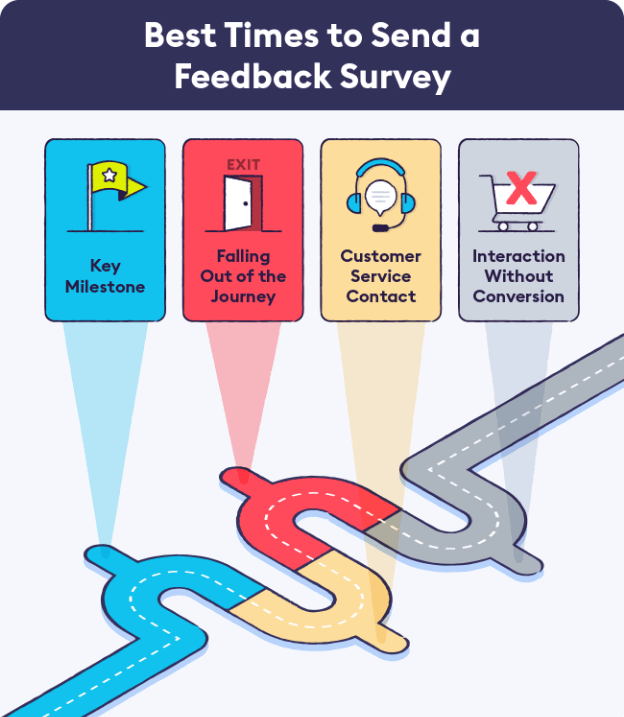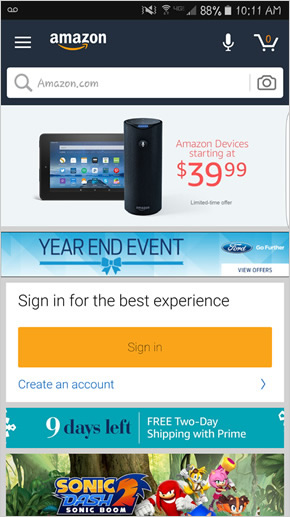Social media marketing can be used by even the smallest businesses or influencers to thrive. It’s not necessary to have a team of experts or a partnership with a celebrity in order to launch a brand. Follow these social media marketing tips for small businesses to see steady growth.
Social media marketing can be used by even the smallest businesses or influencers to thrive. It’s not necessary to have a team of experts or a partnership with a celebrity in order to launch your brand. Follow these social media marketing tips for small businesses to see steady growth.
1. Outline clear goals and desired outcomes

It can be tempting when you create your social profiles for your business to post social content right away in order to fill your feed. Before you post anything, you should decide what you hope to achieve with your social media strategy. Otherwise, you could end up with a flop. The desired outcomes may include:
-
- Sales of products or services
- Email signups
- Website Visits
- Brand awareness
It will be much easier to create a social media plan and to direct your consumers to an actionable call to action once you have set clear goals. Your goals will also play a major role in deciding which platforms to use.
2. Select Platforms Strategically to Achieve Your Goals

Most businesses believe that they must be present on all social media platforms to reach as many people as possible. This approach can often appear unauthentic and dilutes the brand. Consider a more focused approach instead of spraying and praying. How can you decide where to spend your time in an age of digital first?
Begin with your audience
Consider your audience, including age. An AudienceProject survey found that 78% Baby Boomers use Facebook. When teens aged 13-17 are considered, this number drops to just 32%. You can find out where your audience is spending the most time by doing a quick Google search.
Keep your goals in mind
If you want to create creative content for your business, platforms that focus on images and video, such as Instagram, TikTok and YouTube, may be the best fit. If you’re more interested in customer service, it may be best to focus your efforts on Facebook or Twitter where it is easier to communicate privately and directly with your audience.
Do your research on your competitors
Research the social media platforms that your competitors use to ensure you don’t miss out on any potential niches. How active are they on social media? Are their customers involved? This is a sign that you should get involved in the conversation.
Don’t get discouraged if none of your competitors have a platform yet. You might be the first to claim a loyal following.
3. Recycle content for cross-posting across channels

Don’t think you need to create unique content for every channel once you’ve set up your social media profiles. It’s fine to reuse the same content on different platforms if you are limited in time and resources.
While hashtags are highly effective for Instagram and Twitter they can look gimmicky when used on other platforms such as Facebook or Youtube. Your copy should be optimized based on the platform and character limit. If you copy and paste longer captions from Facebook, Instagram or Twitter into Twitter, your tweet will be cut off at 280 characters.
4. Design images with optimized dimensions

Each social media platform offers recommended video and image dimensions. This ensures that your assets will be displayed correctly and make the greatest impact. You should hire a team of designers to handle your social media. They should have mastered image optimization.
Use a software such as Canva if you are handling things internally. It offers optimized templates that you can customize within minutes. If you are unsure, SocialPilot offers a comprehensive, up-to date guide to all sizes for social media images on all major platforms.
5. You can automate your posts and save time by batching them.

Your time as a small-business owner is valuable. You can easily get caught up in creating and shooting new content almost every day. But it doesn’t need to take so much time. It’s all about using a social media scheduler and knowing the best time to post.
Scheduler Tools
By scheduling automated social media updates, you can spend more time on other aspects of your company and less time online. Plan one or two days per month to shoot and create all of your content. Then, schedule it throughout the month. Start with these popular tools:
-
- Hootsuite
- CoSchedule
- Tailwind
- Canva Content Planner
The best dates and times to visit?
Even the most thoughtful and best posts must be posted at the correct time in order to be seen. Most of the tools listed above automatically schedule content for optimal posting times. If not, then here are the optimal times to post according to CoSchedule’s most recent report:
-
- All Platforms:Monday through Friday, 8:41 am, 3:15 pm, and 7:45 pm.
- Instagram : Tuesday, Wednesday and Friday at 9 a.m.
- Facebook : Monday, Tuesday, Thursday at 7:15 am, 3:15 pm, and 7:00 pm.
- Tweet: on Wednesday, Thursday and Friday, at 8:38, 9:26, and 10:08 a.m.
- Linkedin Tuesday, Wednesday, and Thursday at 1:00 am, 10:00 am, and 12:00 pm
- Pinterest : Tuesday, Thursday and Friday at 12 p.m.
6. Use polls to collect real-time customer feedback

Instagram and TikTok can be goldmines when it comes to audience research. You can ask direct questions using the audience polls and question/answer box features. Use them for:
-
- Get customer quotes with permission
- Choose which products or services you want to launch next
- Find out what the audience wants by using a “this or” poll
- Allowing customers to raise the flag can generate leads
A poll is a great tool to engage customers in a conversation that feels more natural than an advertisement.
7. Increase Engagement by Using User-Generated content

Encourage your customers to share your content to increase engagement and to have real conversations. Encourage them to share content featuring your brand, such as photos or a hashtag. You can also reward them for re-posting the content on your story. UGC can also increase your brand’s visibility, resulting in more potential customers.
8. Keep Brand and Tone Consistent

A consistent tone in both copy and images is essential to building a brand consumers can trust. If you haven’t done so already, now is the time to develop brand guidelines. Visually, you should use a brand color palette with the same font or fonts.
Your social media copy must reflect the values of your brand. You might be fun, casual and fresh or you may lean towards professionalism and information. Keep your voice consistent, no matter what. If you are handling the copywriting, it is easiest to do this yourself. However, if your team is doing it, you should edit for tone.
9. Give prompt responses and a stellar customer service

It’s easy to get caught up in the creativity and fun of social media, and forget about your responsibility to offer quick and helpful service to those who ask questions.
DM and Comments
The majority of your customers are going to ask you questions through direct messages or post comments. You should respond within one day, otherwise a sale could fall through or the customer might get frustrated.
Chatbots to Automate Responses
You will still receive questions, even if you have done your best to provide customers with important information and policies. Most social media platforms offer automated responses that let you prepare pre-written answers to frequently asked questions, such as “What are your business hours?” and “Where is my order?”
Chatbots may appear inauthentic or corporate but they will ensure that customers receive a prompt response until you are able to personally attend to them.
Crisis Management
All entrepreneurs wish for smooth sailing but there will be times when it is impossible to avoid a crisis. Sometimes things go wrong, whether it’s due to external factors such as pandemics or internal errors. How you respond and how far you go determines your success. Remember to at least:
-
- Brand monitoring software such as BuzzSumo and Google Alerts will alert you when your company is repeatedly mentioned online, indicating a possible crisis situation.
- Stop posting new content that does not address the crisis. Ignoring the crisis or pretending that nothing happened is the worst thing you could do.
- Face the problem head-on, and explain how you plan to fix it. Apologize only if necessary. If applicable, outline any steps that customers should follow.
- Create a FAQ landing page for customers to go and learn more.
10.Review performance metrics to learn from the past

After a few posts, you should start compiling a monthly report on your social media performance. This will allow you to track your progress and make sure you are hitting your goals. There are many software programs that can help you track your social media metrics. However, a good place to begin is on social media.
Meta platforms such as Instagram and Facebook, for example, provide detailed business performance information, including but not limited to:
-
- Follower demographics
- New followers are net new
- Engagement metrics like Likes, Comments, Follows and Shares
- The total number of stories, posts, reels etc. published within a given timeframe
Look for patterns and stories in the data. Your engagement may not be as high for grid posts on Instagram, but reels might be taking off. To maintain momentum, invest more time and energy into reels. Flexible and willing to change strategies are key.
11. Set a budget for your spending (and stick to it)

It’s now time to make the most of your social media posts. You’ve invested time in planning, designing and posting. Set a budget each month for your social media efforts, which can include any of the following:
-
- Paid advertising, boosted posts and other paid promotions
- Influencer marketing
- Photographie and video production
- Copywriting and editing
- Strategic management
- Software for scheduling, automation and analytics
According to the latest Deloitte CMO Survey, companies will allocate between 14%-15% their revenue towards their social media budget by 2023. The percentage of your budget will ultimately depend on whether you are B2B, B2C or not. Businesses in the healthcare and technology industries may spend up to 21% of their revenue on marketing. However, companies in the consumer goods and service industry only spend 6%-9%.
12. Keep an eye on social media trends for 2023

In 2023, social media will continue to evolve and bring new trends. Here are some notable updates.
Users-Generated content and nano-Creators
It’s difficult to be authentic while promoting yourself. UGC (user generated content) is a great way to do this. Brands hire small influencers, also known as micro- or nano-influencers, to share their experiences with their products and services on social media.
This is a good way to emphasize the benefits of what you offer. It also works. According to a study, 80% of consumers said UGC greatly influences their purchase decisions.
Short-Form video over static images
Instagram’s algorithm favors videos, such as reels and live streams, over static images. To stay relevant, socially-savvy brands are shifting to video content — especially short-form videos.
AI’s Continued Rise
AI will be mainstream by 2023. TikTok, for example, allows you to create a video background based on text that you enter. AI can be used by your business to create script outlines, suggest topics and more.
Don’t miss out on the many small business resources that are available to you. To get affordable training and free consultation, start by locating your local Small Business Development Center.










Leave a Reply